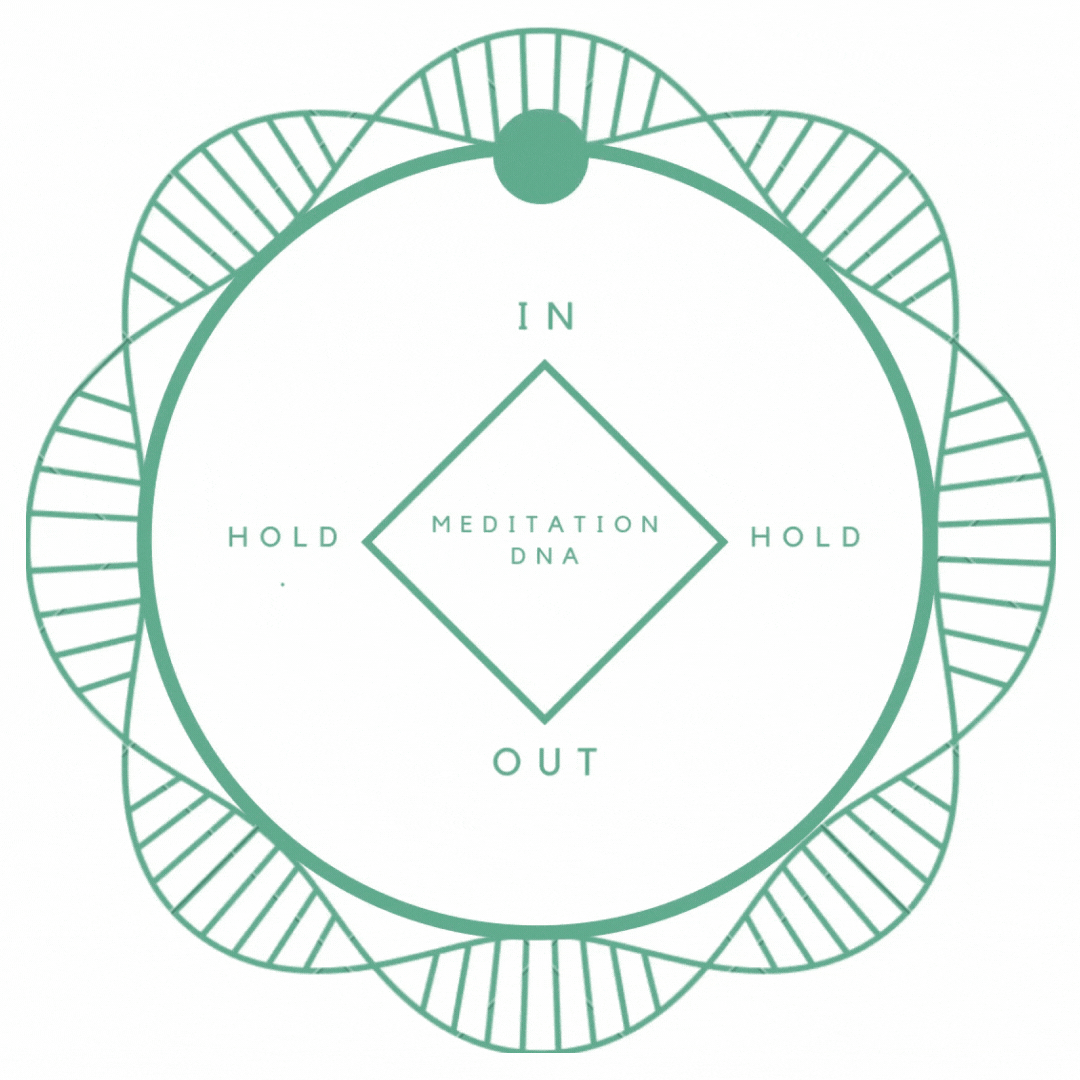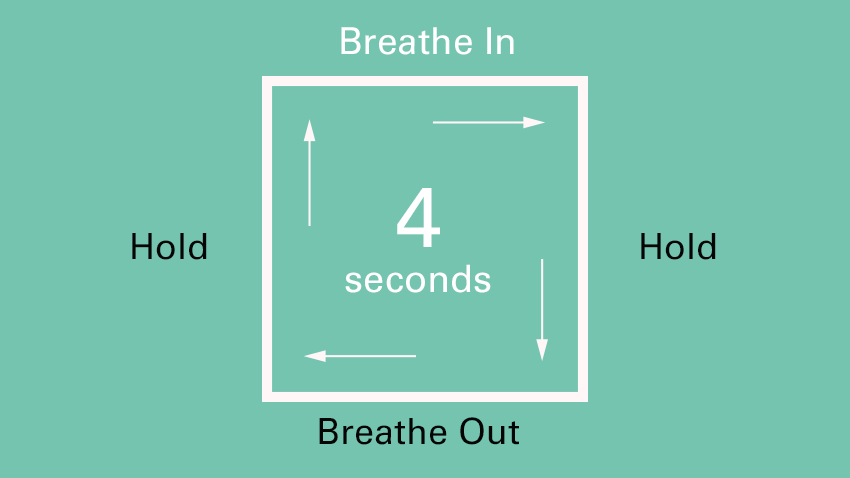
You might’ve heard of ‘box breathing’ or maybe the term ‘1 to 1 breathing’ or ‘square breathing’ is more familiar to you.
For those, that might not know what it is – what is the box breathing exercise?
Box breathing is a certain type of breathing technique that is a powerful tool used for practicing deep breaths by slowing down the breath in order to calm the bodily system down (nervous system, heart rate and breathing rate) and reach a state of heightened concentration, awareness, and deeper focus. It is therefore a great way to decrease stress if practiced often.
Various types of people practice this breathing technique! Not just meditation gurus or Yogis! The technique is used across the board from athletes to nurses to the U.S. Navy SEALs, which Mark Divine refers to in his book ‘SEALfit’.
Four-Square breathing is especially useful for those that struggle with lung disease or function of the lungs as it can help by increasing lung capacity and efficiency of the absorption of oxygen into the body.
How Box Breathing Works
When we are stressed out or anxious, our body produces adrenaline which causes us to breathe faster than normal. This can lead to shallow breaths that don’t allow enough oxygen into the lungs. Most people naturally breathe shallow and in cases of rapid, shallow breathing hypoxia can also occur. Shallow breathing, over time, can lead to chronic anxiety and other health problems such as high blood pressure, heart disease, diabetes, depression, insomnia, headaches, etc.
Box breathing allows us to lengthen our breathing rate out which in turn helps us to breathe deeply and access slow breathing rather than a shallow breath.
Deep breathing activates our vagus nerve which controls the parasympathetic nervous system which is known as our ‘rest and digest’ nervous system and therefore reduces feelings of anxiety.
Ever wondered why someone suffering from a panic attack is told to count their breaths? Counting your breath allows you to focus on shifting shallow breathing to deep breathing and therefore changing your breathing pattern.
Other Effective Breathing Methods
There are many other techniques that can be used to help you breathe more deeply. Some people use diaphragmatic breathing or abdominal breathing instead of box breathing. Diaphragmatic breathing is similar to box breathing except it uses only one breath per cycle rather than two.
Abdominal breathing works by using the muscles around your abdomen to expand them during inhalation and contract them during exhalation. This technique helps increase oxygen intake while decreasing carbon dioxide output.
2-to-1 Breath is another technique that can be used with similar benefits. Instead of the inhale matching the counts of the exhale you would inhale for a specific count (eg. 4) and then exhale for double that chosen count (eg. 8). The long exhale immediately activates our parasympathetic nervous system and deactivates our fight or flight response.
Try it with us here:
The great thing about Box Breathing is it can be practiced whenever and wherever as an effective breathing technique (known as Pranayama in Yoga) – while you are driving, in the shower, or making food. It is a really simple and easily accessible way to engage in a breathwork practice.
You can give it a try anywhere when you’re overly distracted or exercising so strenuously that you can’t talk through it. Also, you can practice box breathing for only a minute or two and experience the immediate benefits of a calm body and a more relaxed mind, or you can practice for several minutes and experience that plus the longer-term benefits of meditation, including increased resilience to stress, decreased feelings of depression, increased positive feelings, and more. (verywellmind.com)
What studies say
The research on this topic is limited, but there are some studies showing that people who do regular deep abdominal breaths have lower levels of cortisol than those who don’t breathe deeply.
Research has shown that deep breathing can be used to reduce stress, as well as to reduce blood pressure and hypertension – which is a benefit of box breathing.
Studies have shown that breathing exercises and other simple practices are more effective at reducing stress than more complex stress management methods.
Benefits of Box Breathing Technique include:
- lowers chronic stress levels by lowering cortisol levels
- Acts as a relaxation technique
- parasympathetic nervous system (rest and digest system)
- calms the body and relaxes the mind
- increase cognitive performance and focused mind
- lowers blood pressure, breathing rate, and heart rate
- An effective meditation practice
Simple steps – How to do Box Breathing with A Four-Breath Count:
1. Sit comfortably upright or cross-legged and place both hands over your heart. Close your eyes. You can also do this while standing or lying down.
2. Seal off the lips. Inhale through the nose and exhale completely through the nose. (nose breathing rather than mouth breathing)
3. Inhale for a slow count of 4.
4. Hold the breath at the top for 4 counts.
5. Exhale for a slow count of 4.
6. Hold the breath at the bottom for 4 counts.
7. Repeat this for 5 – 10 rounds.
8. Try and make it part of a daily routine
Try it with us through this short guided box breath meditation:
Helpful Box Breathing Gifs:






